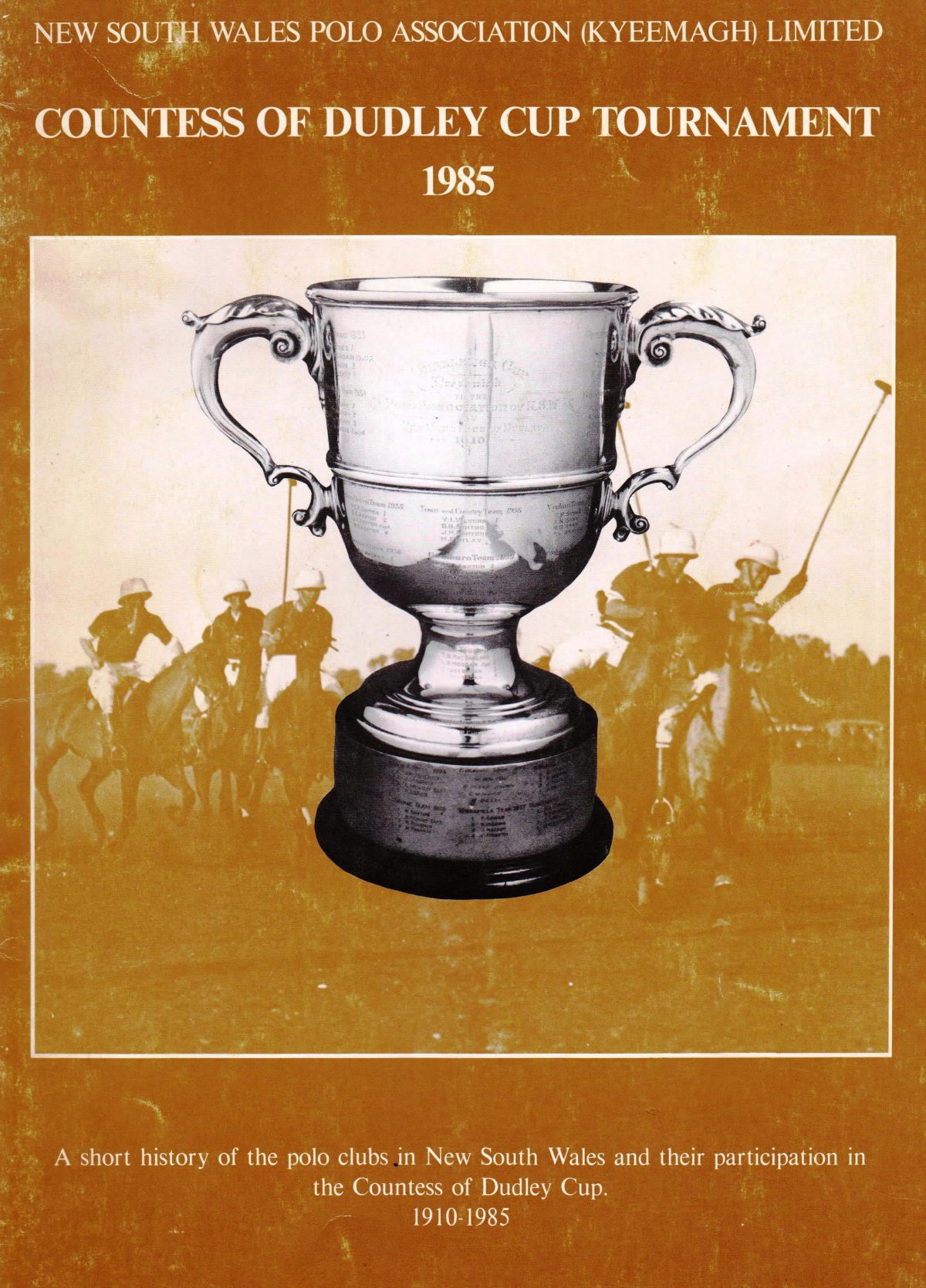History of the Countess of Dudley Cup
http://www.nswpolo.com.au/About/Tournaments-and-Trophies/Countess-of-Dudley-Cup
The New South Wales Championship Trophy, the Countess of Dudley Cup, since being presented in 1910 has become arguably one of the most coveted trophies in Australian Club Polo.
The trophy was named after the wife of William Ward, second Earl of Dudley who was the Governor General from 1908 to 1911.
The catalyst for the Countess of Dudley lending her name to the trophy was probably “Banjo” Paterson. Having a deep personal interest in developing nursing services in the outback, the Countess enlisted Paterson, by then a national figure, in support of her cause. Prominent in Sydney polo, Paterson was ideally placed to ask a favour of her in return.
The Countess of Dudley presented the silver cup at the inaugural tournament in 1910. It was to be a perpetual challenge trophy open to all member clubs of the New South Wales Polo Association and to ‘clubs which are members of the kindred associations in other states’.
The Earl of Dudley served in the Boer War and had been Lord Lieutenant of Ireland before his posting to Australia. He and his wife dissolved their marriage in 1912.
The Countess of Dudley set up a military hospital in France for Australian soldiers on the Western Front and dies whilst sea bathing off the coast of Ireland in 1920. Her great-granddaughter is the actress Rachel Ward. The Earl of Dudley died in England in 1932.
Until the mid 1930’s the Countess of Dudley was played at the Kensington Pony Racecourse, which now forms part of the campus of the University of New South Wales. It was played at Kyeemagh and after the war, resumed in 1948 at Forbes and then at Maitland and Goulburn before settling at Warwick Farm Racecourse in 1956 and occasionally at country venues if the weather was inclement. In the late 1990’s the Cup was staged at Scone for two years before drought and low rural commodity prices led to less participation in polo. This caused a suspension of the Tournament for two years. Since 2002 the Countess of Dudley Cup has been played at Windsor Polo Club.
http://www.nswpolo.com.au/About/Tournaments-and-Trophies/Countess-of-Dudley-Cup
You can download the 42 page booklet by Sally Weedon:
The booklet has fascinating reviews of ‘The Cradle of Polo’and ‘Polo in Australia’.
The Upper Hunter has featured very prominently in the hierarchy of achievement of both players and clubs. In the 75 years 1910 – 1985 Scone won on four (4) occasions while Muswellbrook were successful on three (3). Wirragulla from the Dungog region was champion team on no less than eight (8) occasions.
Multiple trophy winning individual players who represented Scone, Muswellbrook and/or Wirragulla were prominent members of the Mackay family: J K Mackay Senior (7 wins), R T Mackay (6 wins) and J K Mackay Junior (4 wins) as well as C W Hooke (Wirragulla 5 wins). Neighboring Club Quirindi was perhaps the standout performer with eight (8) Cup wins represented by champion players Sinclair Hill (7 wins), Peter Cudmore (8 wins) and Theo Hill (6 wins). Goulburn Club won the trophy the most times with 13 successes overall.










